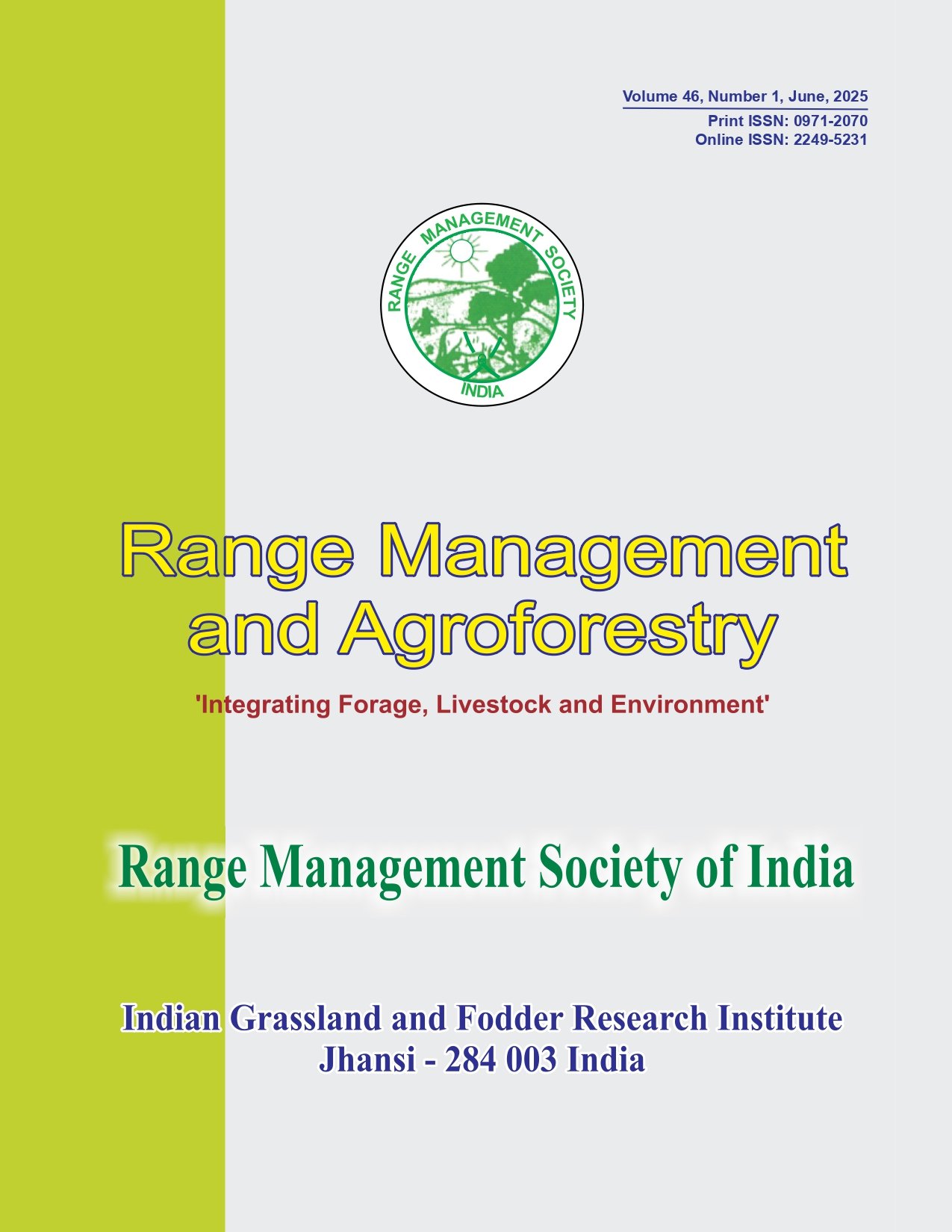Physiological adaptations of lucerne under a limited irrigation system
DOI:
https://doi.org/10.59515/rma.2024.v45.i1.09Keywords:
lucerne, limited irrigation, tolerance, growth, osmotic adjustment, conductance, Chlorophyll fluorescence, branches, antioxidantsAbstract
A field study was conducted to identify the physiological tolerance mechanism of lucerne to limited irrigations. Lucerne needs irrigation once in 10 days. So, limited irrigation treatment was imposed once every 25 days. In the initial part of the experiment, accessions collected from the western part of India were screened for biomass potential under limited irrigation in an augmented RBD design. Accessions that performed well under these conditions were grown under temporal isolation, and seeds were collected. In the second part, a field experiment was conducted at SRRS, ICAR-IGFRI, Dharwad, from December 2018 to March 2020 to screen lucerne accessions under limited irrigation to identify the physiological and morphological characters that are required to impart tolerance in lucerne under the cut and carry limited irrigation system. An RBD design was adopted to screen 12 lucerne accessions under limited and full irrigated conditions. Accessions that maintained good persistence under limited irrigation also performed significantly (Acc38/2010, Acc23/2010, A2) regarding yield. Persistence during the juvenile phase depended on conductance, osmotic adjustment and antioxidant capacity. Accessions showed a constant increase in the number of branches after each harvest under limited irrigation was promising in yield performance. Specific-leaf weight (SLW), crude protein, conductance, increased number of branches, and persistence were significantly and positively correlated with yield.








